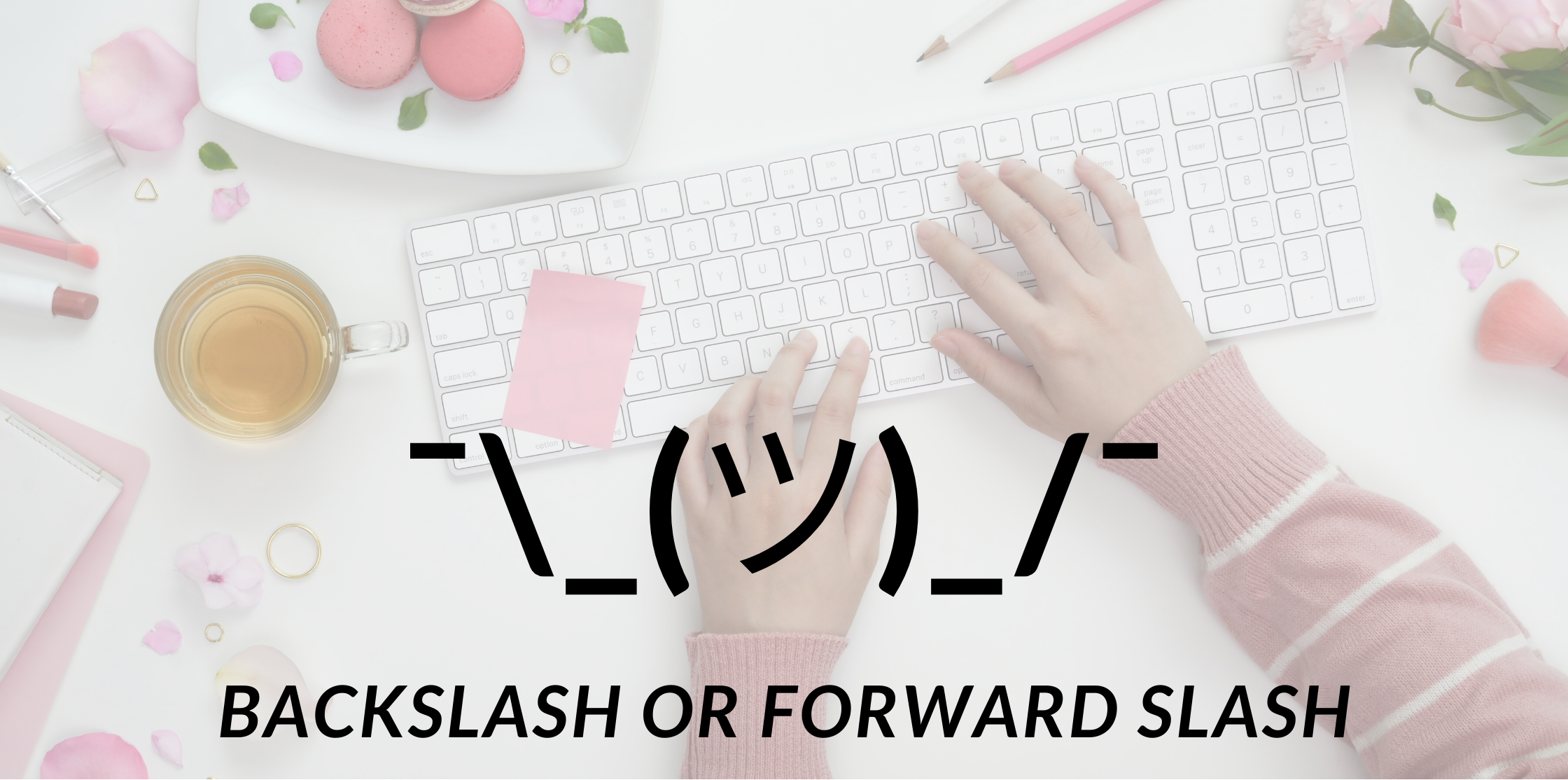When sharing a web address (URL), sometimes we need to get a little more specific than a domain name. Maybe we have a special offer.
Domain name: myCoolSite.com
Special offer: myCoolSite.com/offer
Routinely you’ll hear someone’s special offer at the end of a podcast or commercial as:
“My cool site dot com, backslash, offer.”
Backslash can sound pretty cool to say, and you might even think it gives you a little nerd-cred, but quite the opposite happens.
If you say Backslash,
- You are wrong
- It’s a lot of extra syllables for you (or your narrator) to say
- A modern browser can correct any slash error in a URL.
- You erode your authority with anyone who knows the difference between a backslash and a forward slash.
Saying backslash is more often wrong that right.
Although saying backslash can sound cool, there are relatively few times an average person may use it.
Let’s have a quick look at some examples of slash usage:
- Date: 11/15/21
- Fraction: 1/2
- Abbreviation: C/O (In Care Of)
- Shorthand for ‘or’: For the upcoming potluck, bring a dessert/appetizer.
- Line Break (notation): Twinkle, twinkle, little star, / How I wonder what you are! / Up above the world so high, / Like a diamond in the sky.
Notice what is similar with all these common slash examples. Which way does the slash face? We technically refer to this as a forward slash. (See the note at the bottom for where the backslash actually gets used).
 I like to picture a person walking along the top of the text you are reading. You see them in profile walking to the right. If that person were to fall forward, they would fall to the right, and if they were to fall backward, they would fall to the left. If you think of the slash as a super simple stick figure, you can now imagine which key is the forward slash and which is the backslash.
I like to picture a person walking along the top of the text you are reading. You see them in profile walking to the right. If that person were to fall forward, they would fall to the right, and if they were to fall backward, they would fall to the left. If you think of the slash as a super simple stick figure, you can now imagine which key is the forward slash and which is the backslash.
Simply say slash
Keep it simple. You are already asking someone to remember not only your URL but also a specific location of that domain. Keeping it simple with saying slash helps the average person recall your domain later.
Say: “my cool site dot com slash offer.”
The modern web browser knows what you mean
Open a new browser tab (top menu > file > new tab) and let’s visit Google Maps. Here is the URL: google.com/maps
Notice the slash before maps (this is a forward slash). Now try the same URL with the other slash, replace it with a backslash.
Backslash URL: google.com\maps
Notice the browser will self-correct the error, replacing it with a forward slash, and you will arrive at the same destination in your browser.
The average person might not know the difference
Most people don’t know the difference between a forward slash or a backslash. Likely, they gravitate to what they are familiar with when they hear either term. They look for the slash key in the lower right corner of most keyboards, the one below the question mark.
But, for the part of the population that knows the difference, you immediately erode your authority with them by using the wrong term.
Think of all your grammar loving friends who always seem to correct you. Or think of the programmer who might actually use a backslash in their work. Someone who knows the difference will actually cringe when you say backslash as part of the URL.
Curious about when we actually use a backslash?
The \ backslash is used mainly for programming languages (as an escape character for special circumstances or used in a regular expression), or work done in the terminal window for Windows-based computers.
Often we use as a non-ordinary key to let a compiler or interpreter know to treat the following chuck of text in a special way.
Hopefully, more of us will simplify the way we share a web address like this. Say slash and everything will work out fine, you’ll have less to say, and you sidestep the chance of being wrong. And the next time you hear someone say “backslash,” you’ll know what they really mean.




